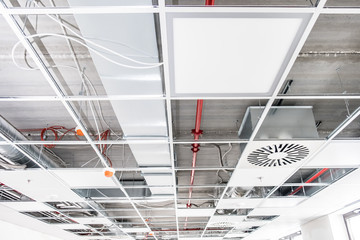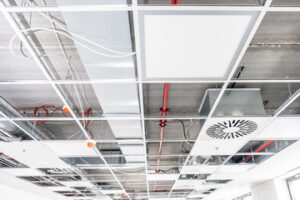When deciding to install an air conditioning system, it’s important to consider all aspects of the process. AC Installation Los Angeles includes the location of the installation, the electrical connections, the ductwork and insulation, and more. In addition, you should find out if the AC installation company offers a good warranty on their work and if they have top-notch customer support.
 The location of the AC unit is important to keep in mind for optimum cooling efficiency. This will help the air conditioner run more efficiently, saving you money on your energy bill! An AC unit should be installed on a level, sturdy surface free of dust, debris, and other contaminants. It should also be located away from direct sunlight so that it can function properly.
The location of the AC unit is important to keep in mind for optimum cooling efficiency. This will help the air conditioner run more efficiently, saving you money on your energy bill! An AC unit should be installed on a level, sturdy surface free of dust, debris, and other contaminants. It should also be located away from direct sunlight so that it can function properly.
A good location for an AC unit is on a concrete or PVC constructed slab, as this will be more durable and reduce vibrations. This will also help reduce the amount of heat it radiates and keep the system running efficiently longer.
Ideally, it should be placed at least 5 to 6 feet off the ground so that cold air can easily reach the floor. This will ensure that the cold air reaches every corner of the room and can be circulated evenly throughout.
The air conditioner should also be installed near grass or mulch to reduce the amount of heat it radiates, which will keep the system working more effectively and save you money on your energy bill! It’s best to avoid putting the AC on a cement or rock-based surface because they can emit a lot of heat and affect the system’s ability to cool your home.
Another factor to consider when installing the AC is the room’s size. You should always follow the manufacturer’s recommendations for where to install your AC so that it can provide optimal cooling.
For instance, a 1 Ton AC should be installed at about 7 feet above the ground in order to maximize its cooling power. Similarly, window AC units should be placed at about 3 to 4 feet above the ground to provide maximum airflow and cooling.
In addition, you should make sure that the unit is securely mounted to a stud or other supporting structure in order to prevent it from falling out of the window. In most cases, this can be done by using a metal bracket that’s secured to the inside of the window frame.
One of the first steps in planning your AC installation is a complete electrical snoop around. For starters, you’ll need to find out which wires have a clear lining. You’ll also want to check your meter readings to make sure you have the right ones. Once you’ve got those in order, you can tackle the big task at hand. In the interest of not catching any splinters, you’ll need to consult a certified electrician. A quality technician will show you the right way to do it all. The best part? It won’t cost you a fortune. A reputable contractor will also have a good idea of how long your project will take, as well as the best time to do it, and a schedule.
Ductwork is an important part of any home’s heating, ventilation and air conditioning (HVAC) system. This system transports air from your furnace or AC unit to different parts of your home, keeping everyone in your house comfortable.
Without ductwork, each room would have a different temperature. And that’s not an ideal situation if you want to stay comfortable and keep your energy costs down.
It’s also essential that ductwork is properly sealed to prevent air leaks and airborne particles from entering your home. This can lead to poor indoor air quality and compromised health.
There are many types of ductwork that can be installed in your home, and it’s a good idea to choose the right type for your needs. Some of the most popular duct materials include metal, fiberglass and flexible polyester.
Choosing the right duct material is an important part of ensuring your HVAC system will function properly for years to come. It’s also important to choose a duct installation professional that is experienced with your desired duct material and design.
Another consideration is the cost of ductwork, which varies depending on your location, materials used, and size of your home. For example, the average price for a home with 150 linear feet of ductwork is about $1,500 to $3,000, while a home with 300 linear feet of ductwork can cost anywhere from $4 to $7,000.
If your ducts are poorly installed or damaged, they may not be able to properly distribute air to your home. This can result in high energy bills, rooms that don’t get a uniform temperature, and poor indoor air quality.
Ducts are an essential part of your HVAC system and should be regularly inspected to ensure they are working properly. If you have any questions about your home’s ductwork, talk to a local HVAC contractor.
Installing ductwork is a large project that requires a lot of time and labor. It’s important to find a reliable ductwork contractor that you trust, and make sure to check their license and insurance. It’s also important to compare quotes from multiple contractors.
Insulation helps your air conditioner run at peak efficiency by preventing the refrigerant line from overheating. If your AC lines get too warm, the condenser and compressor can work harder than necessary and cause damage to the unit. It also prevents dripping and moisture damage to your pipes.
Insulators can be fabricated from many different materials including fiberglass, foam rubber, and polyethylene foam. Each type has its own R-value, or thermal resistance, which indicates how effectively it insulates. The higher the R-value, the more effective it will be at reducing heat loss.
Typically, insulation is installed at the time of construction, but it can be added later as well. It will help lower your energy bills over the life of the home by keeping the temperature inside the building more comfortable.
When insulating a wall, it is important to make sure that the material you are using has a high R-value. This will ensure that the insulation is able to block out excess heat and reduce the amount of cold air coming in through gaps around windows and doors.
The material you choose should also be able to minimize the effect of thermal bridges, which are pathways for heat and cold to pass between walls and floor. This is especially important in cold climates where metal framing can be a problem.
After you have decided on the best insulation for your AC, it is time to install it. To begin, turn off your air conditioner and remove the old insulation. You can use a razor to cut the old insulation off, but be careful not to nick the copper pipe.
Next, clean the pipe with denatured alcohol to remove any dirt. Then wrap it with insulation tape. Then, wrap your service valves and the tubing where it exits the house.
You can buy a variety of insulation options from your local home improvement store, such as Lowe’s or Home Depot. The best choice is polyethylene foam, which is inexpensive and easy to install. It is also the most effective. You can also install it yourself, as long as you have the correct tools and supplies.



